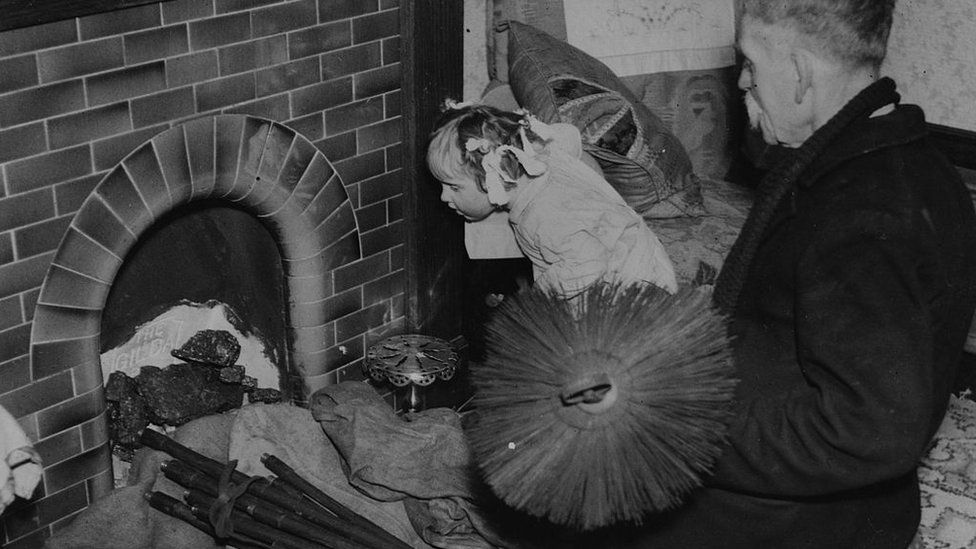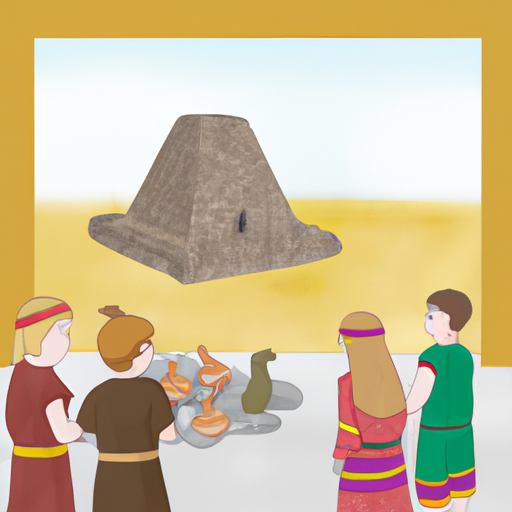What was life like for a child chimney sweep?
Life for a child chimney sweep during the 18th and 19th centuries, especially in London, was incredibly harsh and dangerous. Child chimney sweeps were typically orphans or children from poor families who were sent to work as apprentices to master chimney sweeps. Here’s what their lives were like:
- Working Conditions: Child chimney sweeps were required to climb and clean the narrow and soot-filled chimneys of homes and factories. This was dangerous and physically demanding work. The children often had to navigate tight, dark spaces with little room to move.
- Long Hours: They worked long hours, sometimes starting before dawn and continuing until late in the evening. They had to sweep several chimneys each day to make a living.
- Health Risks: The most well-known risk was exposure to toxic soot, which led to a range of health issues, including respiratory problems and skin ailments. Many child chimney sweeps developed chronic and life-threatening conditions.
- Poor Living Conditions: They lived in squalid conditions, often in the master chimney sweep’s home. These children were subjected to neglect and mistreatment.
- Lack of Education: Child chimney sweeps received little to no education, which further limited their opportunities for the future.
- Exploitation: They were often exploited by their masters, who profited from their labor without providing them with a fair wage or proper care.
In a crisis, people will turn to plants once again for both food and medicine.
And there are some plants that will vanish faster than all others.
So the only way to make sure you have them when you need them is to grow them in your own backyard.
P.S. However, there is a limited number of these seeds and the demand is huge–no wonder, with all that’s happening in the world right now. Click here to see if there are any left for you!
As for the presence of chimney sweeps in London today, the occupation has evolved significantly. Modern heating systems and building regulations have reduced the need for chimney sweeps to clean soot and creosote from chimneys. However, chimney sweeps still exist in the city, primarily for the maintenance and inspection of chimneys in older homes, fireplaces, and solid-fuel heating systems. They also provide services like chimney lining and installation of wood-burning stoves.
Historically, chimney sweeps were at risk of developing chimney sweep’s carcinoma, a type of cancer caused by prolonged exposure to soot and tar. This condition is now quite rare due to improved safety and hygiene practices in the occupation.
If a chimney sweep got stuck in a chimney, which was a real and significant risk, it could have led to severe injury or even death. In some cases, other workers or rescue personnel would have to be called to disassemble part of the chimney to free the stuck individual.
Chimney sweeps typically wore simple clothing that didn’t offer much protection. This attire consisted of loose-fitting pants, a shirt, and a hat. As they worked in dirty and soot-filled environments, their clothes quickly became blackened and covered in soot. This distinctive appearance is often associated with the classic image of chimney sweeps.
Are there still chimney sweeps in London?
Yes, there are still chimney sweeps in London and other parts of the world, although their roles and services have evolved significantly with changes in heating technology and building regulations. Modern chimney sweeps offer a range of services related to chimney and fireplace maintenance, as well as heating systems. Here are some of the services they typically provide:
- Chimney Inspection: Chimney sweeps inspect chimneys to check for blockages, damage, and safety issues. This is particularly important for homes with open fires or wood-burning stoves.
- Chimney Cleaning: While modern heating systems produce less soot and creosote than older ones, chimney sweeps still perform cleaning services to remove any build-up that could pose a fire hazard or affect chimney efficiency.
- Chimney Lining Installation: Installing or repairing chimney liners is a common service to ensure proper ventilation and prevent leaks.
- Fireplace Maintenance: Chimney sweeps often inspect and maintain fireplaces, ensuring they are in good working condition and safe to use.
- Wood-Burning Stove Installation: Many chimney sweeps also provide services for the installation of wood-burning stoves, which have become popular for their energy efficiency and environmental benefits.
- Safety Inspections: They conduct safety inspections to ensure that chimneys and heating systems comply with local building and safety regulations.
While the traditional image of chimney sweeps climbing into narrow, soot-filled chimneys has become less common, modern chimney sweeps play a vital role in maintaining the safety and efficiency of heating systems in older homes and buildings. They often use modern equipment and tools to perform their work more safely and effectively.
What disease did chimney sweeps get?
Chimney sweeps in the past were at significant risk of developing a condition known as “chimney sweep’s carcinoma” or “soot wart.” This condition is a form of skin cancer caused by prolonged exposure to soot, tar, and other carcinogenic substances found in chimney soot. The cancer typically developed on the scrotum, buttocks, and other areas of the body that were in frequent contact with soot and dirt.
Chimney sweeps would often work in tight, soot-filled chimneys with little protective clothing, and their skin would become heavily contaminated with these carcinogens. The risk of developing chimney sweep’s carcinoma has significantly diminished over time due to improved safety and hygiene practices in the occupation, as well as a reduced reliance on chimneys for heating. Modern chimney sweeps use protective clothing and equipment to minimize exposure to harmful substances, making the condition extremely rare today.






